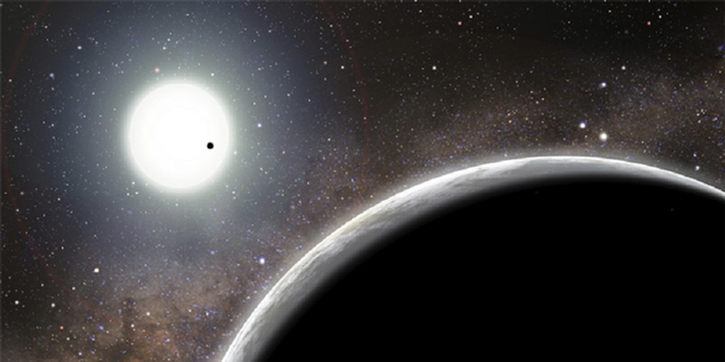The results of a recent study presented at the American Astronomical Society Conference in California on Monday (07/01/2013), revealed that the number of Earth-sized planets in the Milky Way reached 17 billion, is on one of the six stars.
Some planet orbits its star at a distance that is relatively close, closer than Mercury's orbit distance. Further studies need to be conducted to determine the number of Earth-sized planet orbiting at a distance further away, are in the habitable zone.
The mission is the search for extrasolar planets by the Kepler telescope. Research shows that 17 percent of the planet candidates Kepler found measuring 0.8 to 1.25 times the size of Earth and orbits in 85 days or less.
The percentage of super-Earth planets dengqn 1.25 times the size of Earth's orbit about 150 times larger today as much as 25 percent. The same percentage also owned a mini planet Neptune with 2-4 times the size of Earth and orbits with a time of about 250 days.
Meanwhile, the larger planet less frequently. Only three per cent of the candidates belonging to the class planet Neptune, 4-6 times Earth's size. Only 5 percent were classified as a gas giant, 6-22 times the size of Earth and orbits its star with a period of about 400 days or less.
Francois Fressin, researchers from the Harvard Smithsonian Center for Astrophysics, who presented the results, said the planet circling all types of stars. He also said there are many factors that support life on Earth that has not been found on other planets.
"There are a number of factors supporting 20-30 life on Earth as we know that may not be found on other planets. Example, it may be very rare to see Earth-like planet that is only partially covered with water," said Fressin as quoted by Discovery, Monday.
In his presentation, Fressin also revealed that there were 461 candidate planets found by the Kepler again. In total, there are 2740 candidate planets found. Research on planet candidates were expected to reveal the existence of a second Earth.
Some planet orbits its star at a distance that is relatively close, closer than Mercury's orbit distance. Further studies need to be conducted to determine the number of Earth-sized planet orbiting at a distance further away, are in the habitable zone.
The mission is the search for extrasolar planets by the Kepler telescope. Research shows that 17 percent of the planet candidates Kepler found measuring 0.8 to 1.25 times the size of Earth and orbits in 85 days or less.
The percentage of super-Earth planets dengqn 1.25 times the size of Earth's orbit about 150 times larger today as much as 25 percent. The same percentage also owned a mini planet Neptune with 2-4 times the size of Earth and orbits with a time of about 250 days.
Meanwhile, the larger planet less frequently. Only three per cent of the candidates belonging to the class planet Neptune, 4-6 times Earth's size. Only 5 percent were classified as a gas giant, 6-22 times the size of Earth and orbits its star with a period of about 400 days or less.
Francois Fressin, researchers from the Harvard Smithsonian Center for Astrophysics, who presented the results, said the planet circling all types of stars. He also said there are many factors that support life on Earth that has not been found on other planets.
"There are a number of factors supporting 20-30 life on Earth as we know that may not be found on other planets. Example, it may be very rare to see Earth-like planet that is only partially covered with water," said Fressin as quoted by Discovery, Monday.
In his presentation, Fressin also revealed that there were 461 candidate planets found by the Kepler again. In total, there are 2740 candidate planets found. Research on planet candidates were expected to reveal the existence of a second Earth.

 RSS Feed
RSS Feed